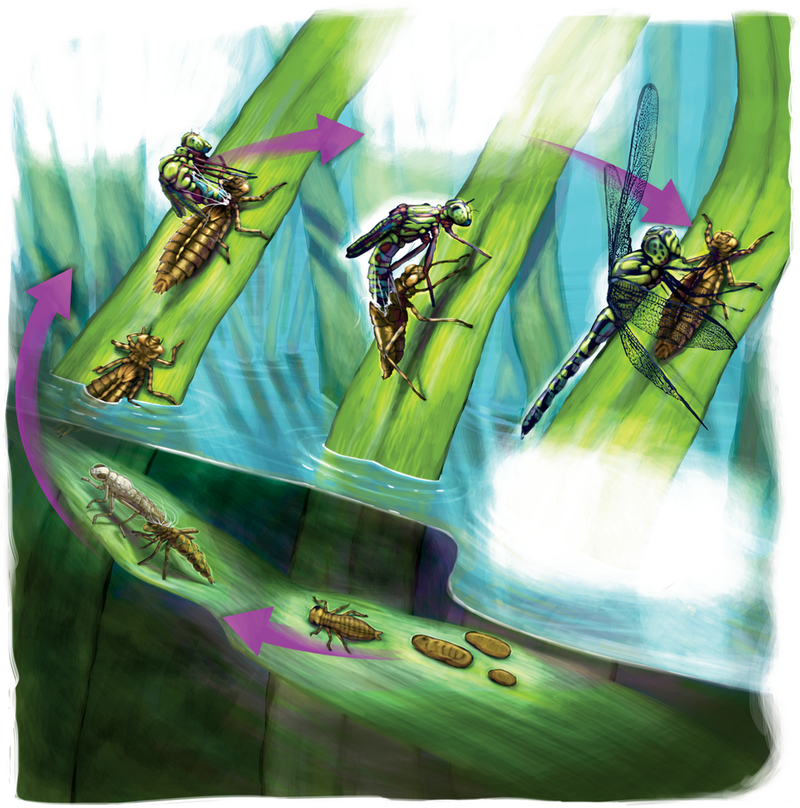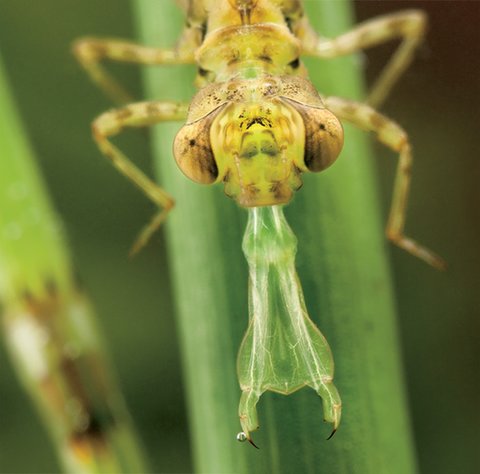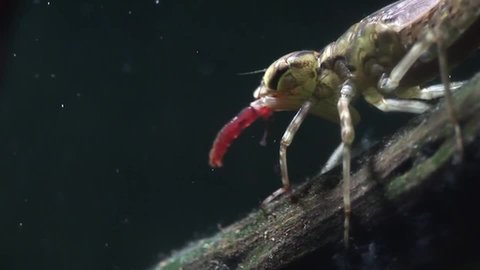CatchingPrey
Asanymph,thesouthernhawkerhasaspecialwayofcatchingprey.Itisabletofolditslipbeneathitsheadwhennothunting.Whenitseesprey,thelipshootsforward.Thenitstabsthepreywithsharp spines.
Thelipcanmoveinlessthan
25milliseconds.Oncethepreyisimpaled,thenymphpullsitslowerlipbacktowarditsjaws.Thejawsarestrongandtoughandlinedwithteeth.Theycutthepreyinto pieces.
Asthenympheats,itgrows.Andasitgrows,itmolts.Anymphmaymoltasmanyaseighttimes.Theperiodofgrowthbetweeneachmoltiscalledaninstar.Lifeasanymphislong.Itcanbeaslongasseveral years.
Anymphshootsoutitslowerliptocatch prey.

Oncecaught,thepreyisquicklyeatenbythe nymph.

fish
AFinalChange
Inthefinalstagesofmetamorphosis,thesouthernhawker’slowerlipcontracts.Itcannolongerhuntandeat.Itneedstomoltonelasttime.Itwaitsuntilnightbeforeleavingthewater.Itclimbsupthestemofawater plant.
Theinsectpumpsfluidsintoitsbody.Itstartstoswell.Theexoskeletonsplits.Itthrustsitsbodythroughthisgap.Itsheadandlegsfollow.Thenitslowlypumpsfluidsintothehollowveinsofitsnewwingstoexpand them.
FromLarvatoAdult
Takeacloserlookatthejourneyofa dragonfly:

Emerging Nymph
Thelarvaleavesitseggandentersthewaterasa nymph.
Instar Stages
Asthenymphgrows,itmolts.Itformsanewexoskeleton.Itwillmoltseveral times.
Final Molt
Thenymphleavesthewaterasitsexoskeletonsplitsonelast time.
Emerging Dragonfly
Thedragonflyclimbsoutofitsexoskeleton.Itwaitsforitsnewskinto harden.
Readyfor Flight
Theadultdragonflyunfurlsitswingsinthesunlight.Thenittakesitsfirst flight.



